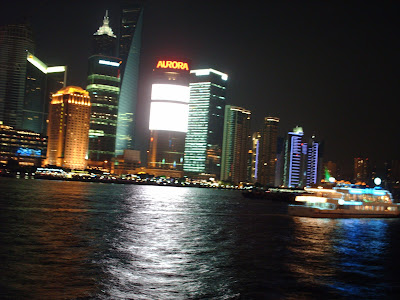
Today we visited the Ohel Moshe Synagogue in Shanghai. To memorialize the success of protecting Jewish refugees during the Holocaust, the Chinese government turned the former synagogue into a museum to show the rest of the world that they are better morally than anyone gives them credit for. Unfortunately, too few people know about the museum for there to be an impact on the world’s mindset.

The Jews fled to Shanghai from the Nazis, because they were being persecuted. From the rise of the Nazi party in the early 1930s, Jews had been looking for places to flee to. Most countries had set up “quotas,” or limits to the amount of people allowed into the country. When the quota was filled, no more immigrants were allowed in. However, Shanghai let in as many people as would come. In all, 30,000 Jews fled to Shanghai.
Once they got to Shanghai, the Jews began to set up their community.  They brought over their culture from Europe, with their own Kosher deli and corresponding schochets and rabbis. They had their own German newspaper, the “Echo,” and its journalists, reporters, and writers. They also built seven shuls. Only two still stand, and one has been converted into a government office building. The Jews built a simple synagogue to keep their culture together.
They brought over their culture from Europe, with their own Kosher deli and corresponding schochets and rabbis. They had their own German newspaper, the “Echo,” and its journalists, reporters, and writers. They also built seven shuls. Only two still stand, and one has been converted into a government office building. The Jews built a simple synagogue to keep their culture together.
The remaining shul, the Ohel Moshe, is a small, plain shul. The brickwork is a simple red and brown pattern. In the actual sanctuary, there are an upper and lower seating sections. Men sit downstairs, on long wooden benches, while women sat upstairs on small uncomfortable chairs. The bema is a small, mahogany construct, without any sort of carving or mark.
Three months ago, the Shanghai Municipal Tourism Administrative Commission finished the renovation of the Ohel Moshe. The blueprints to the original synagogue had been found in the city archives. The renovation was funded by the SMTAC and by donations from various Israeli businesses, and was meant by the Chinese government to show that China stood the moral high ground. When almost everyone else started blocking the immigration of Jews, China welcomed them with open arms. It maintained its open-door policy until Japan controlled Shanghai.

The Chinese government created the museum to try to show that they are morally better than the rest of the world thinks they are. Unfortunately, because few people know about the museum, it has had no impact on the rest of the world’s mindset.



















































